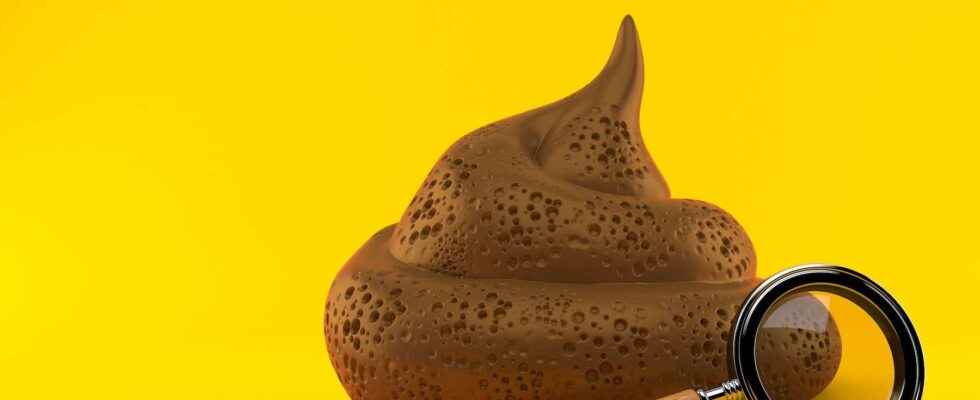Whether you’ve eaten broccoli or carrots, the waste that the body passes through your stool inevitably turns into brown residue. Where does this coloring come from? And why can the stool still sometimes be black, yellow or orange?
You will also be interested
75% of a volume of a normal defecation consists of water. The 25% is a mixture of food debris, undigested food particles (especially plant fibers), bacteria dead and alive, and other substances produced by the liver and the intestines.
The color Brown stool is mainly due to the breakdown of red blood cells. Our body eliminates in fact up to 2.4 million per day, which are first transformed into biliverdin (green in color) then into bilirubin (yellow in color), which mixes with bile in the liver. Under the effect of bacteria in the intestine, bilirubin is further metabolized into stercobilin (brown in color), which gives the stool a brown color. Every day, between 70 and 300 mg of this pigment are produced by the body in this way.
Black, green or yellow stools: what does it mean?
If the stools are usually brown, there are several factors that can still influence this color.
- Saddles yellow : this color, associated with a foul odor, can be the sign of a bad absorption fat linked to dysfunction of the pancreas.
- Saddles gray Where whitish : sign that bilirubin no longer reaches the intestine, where it is colored brown. This can be related to any disease causing obstruction of the bile ducts (Cancer, calculus, inflammatory disease, hepatitis…).
- Saddles black : indicates the presence of undegraded and digested red blood cells, which may signal internal bleeding from the upper digestive tract, especially if the stool has a foul odor. Supplementation in iron, the licorice and other dark foods can also color the stools black.
- Saddles red : indicates a bleeding from the lower part of the digestive tract, from inflammatory bowel disease, diverticulitis, polyps, anal fissures or hemorrhoids.
- Saddles green, violets Where orange : these colors are most often linked to the consumption of large quantities of very colorful foods, such as beets, spinach, the squash or the sweet potato. Beta-carotene supplementation colors the stools orange and iron intake sometimes colors them green.
If the change in stool color is accompanied by a change in consistency or other symptoms, quickly consult your doctor who will prescribe additional examinations.
Interested in what you just read?
Subscribe to the newsletter The health question of the week : our answer to a question you ask yourself (more or less secretly). All our newsletters
.
fs7
